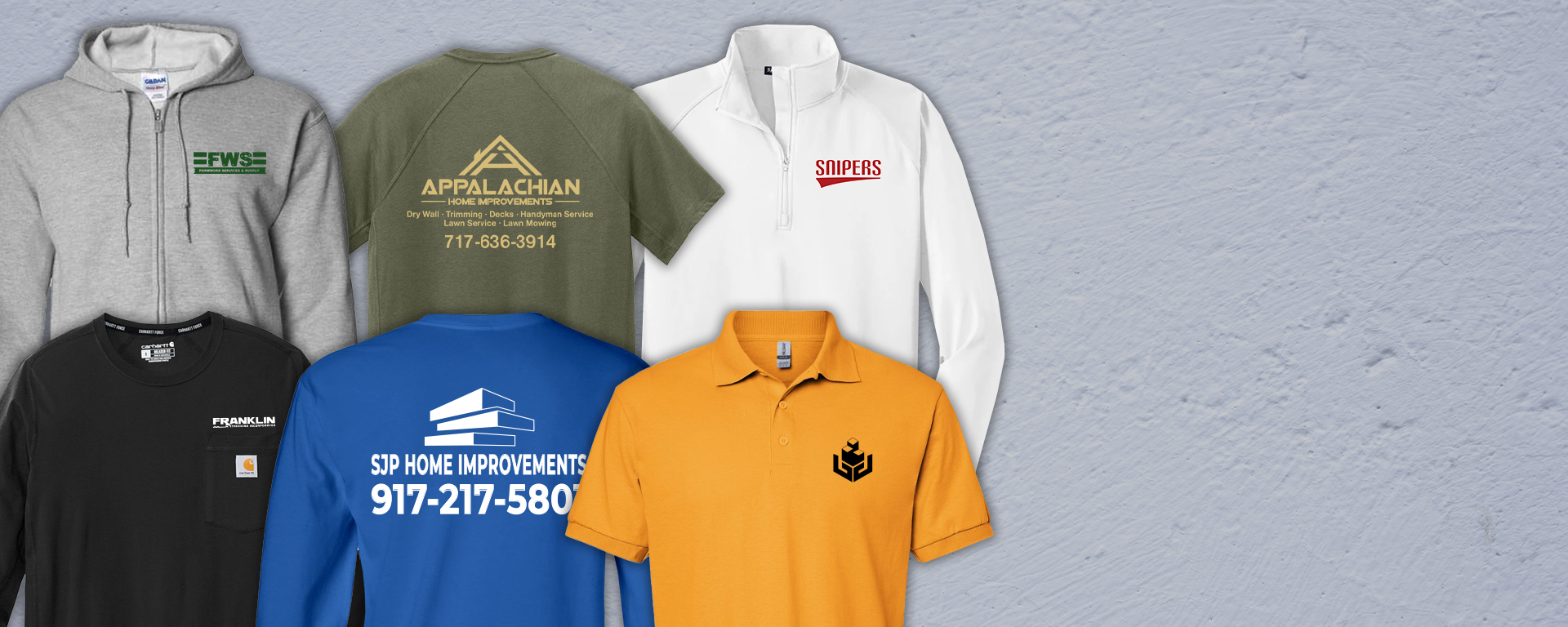Common Fabric Types Used in Branded Clothing and What They Mean
Common Fabric Types Used in Branded Clothing and What They Mean
Blog Article
The Significance of Lasting Apparel: How It Impacts the Setting and Your Closet
Sustainable clothes is increasingly recognized for its vital role in lessening the ecological influence of the rapid garment industry. By concentrating on eco-friendly products and honest manufacturing methods, it addresses pressing eco-friendly worries. This change not only profits the earth however additionally affects consumer choices, leading to a much more thoughtful strategy to wardrobe monitoring. Understanding these characteristics increases important questions concerning style's future and individual responsibility fit it.
The Ecological Footprint of Quick Fashion

Benefits of Lasting Products
Sustainable products use significant benefits, particularly through green fabric choices that reduce environmental damage. These products also demonstrate toughness and durability, reducing the need for frequent replacements. Therefore, they add to a much more sustainable style sector and advertise responsible customer habits.
Eco-Friendly Material Options
While the garment industry has long been connected with quick trends and ecological harm, the increase of environmentally friendly fabric choices offers a transformative chance. Sustainable materials such as natural cotton, hemp, and Tencel have actually gotten appeal due to their reduced environmental influence. These materials are typically created without unsafe chemicals and require less water, lowering their carbon impact - Branded Clothing. Furthermore, lots of green textiles are biodegradable, contributing to a round economic climate by decreasing waste. Selecting sustainable products not only supports eco accountable techniques yet additionally promotes much healthier communities. As consumers become more knowledgeable about their purchasing power, the need for green materials motivates brands to introduce and embrace more lasting manufacturing techniques, ultimately profiting the earth and future generations
Sturdiness and Long Life Advantages
Numerous consumers are progressively identifying the durability and longevity benefits of sustainable materials in their clothing choices. Unlike standard materials, lasting products such as organic cotton, hemp, and recycled polyester are crafted to hold up against deterioration, causing garments that last much longer. This reduced regularity of replacement not only saves consumers money gradually but additionally lessens waste created by fast fashion. Furthermore, sustainable clothing typically utilizes eco-friendly production approaches that improve material stamina, adding to a reduction in the overall carbon footprint. By purchasing durable clothes, consumers can cultivate an extra sustainable closet while enjoying top notch items that maintain their visual and performance gradually. As a result, longevity and durability stand as crucial benefits of picking sustainable products.
Minimizing Waste Via Lasting Practices
Decreasing waste in the apparel industry can be accomplished with innovative practices such as upcycling and repurposing materials. In addition, embracing minimalist closet methods encourages consumers to prioritize top quality over quantity, ultimately reducing apparel intake. With each other, these methods add greatly to a more lasting garments version.
Upcycling and Repurposing Products
Upcycling and repurposing products have become cutting-edge techniques in the fashion sector, transforming discarded textiles right into beneficial new items. This method not only minimizes waste however also motivates creative thinking and individuality in clothing design. By taking old garments and products, developers can produce unique items that reflect individual style while minimizing the demand for new sources. In addition, upcycling usually calls for less energy and water compared to traditional manufacturing processes, considerably reducing the ecological footprint of fashion. As customers become extra familiar with sustainability, the popularity of upcycled apparel proceeds to rise, advertising a circular economy. Inevitably, these practices add to an extra lasting future, where style focuses on environmental health Full Article and wellness over quick manufacturing and consumption.

Minimalist Closet Methods
As individuals check this site out significantly look for to decrease their environmental impact, taking on minimal closet techniques has obtained traction as a reliable approach to sustainable style. These methods highlight high quality over quantity, encouraging consumers to curate a smaller collection of flexible, resilient clothes. By focusing on ageless pieces that can be blended and matched, people can lower the frequency of acquisitions and inevitably reduce waste.Additionally, minimalism advertises conscious usage, prompting shoppers to review the ethical and environmental effects of their selections. This method not just cultivates a much more sustainable way of life however additionally streamlines everyday decision-making relating to clothes. As individuals embrace minimalist concepts, they add to a fashion society that values sustainability and accountable consumerism, eventually resulting in a more eco-conscious culture.
The Duty of Ethical Labor in Lasting Fashion
While many consumers are progressively knowledgeable about the environmental effects of their clothing options, the significance of honest labor methods in lasting style can not be forgotten. Moral labor includes reasonable salaries, risk-free working conditions, and regard for employees' legal rights, developing the foundation of accountable fashion production. Brands that prioritize moral labor not only boost neighborhoods yet likewise set a requirement for responsibility in the industry.Moreover, the integration of moral practices fosters transparency, making it possible for consumers to make informed choices regarding their purchases. This technique contrasts sharply with quick fashion's unscrupulous labor models, which commonly prioritize revenue over individuals. By sustaining companies committed to honest labor, consumers add to a system that values human self-respect alongside environmental sustainability. Honest labor is not simply an add-on; it is important to the more comprehensive mission of sustainable style, making certain that the pursuit for eco-friendliness does not come at the expenditure of human civil liberties.
The Influence of Sustainable Apparel on Carbon Emissions
Lasting clothing has the prospective to greatly lower carbon discharges connected with the apparel industry. Typical garment production contributes significantly to greenhouse gas exhausts, mostly due to energy-intensive production processes and using non-renewable sources. In comparison, lasting style concentrates on green products, such as natural cotton or recycled fibers, which typically call for less power to produce.Moreover, lasting brand names tend to take on much more efficient production practices, minimizing waste and decreasing general emissions. By prioritizing toughness and timeless style, sustainable clothes urges customers to get much less frequently, more minimizing the carbon impact connected with overconsumption.Additionally, numerous lasting brands are committed to transparency in their supply chains, enabling consumers to make educated choices that align with their worths. Eventually, changing in the direction of sustainable garments can lead to a considerable decrease in carbon discharges, adding to a much healthier earth and a more lasting future for the fashion market.
Supporting Regional Economic Climates With Lasting Choices
The shift towards lasting clothes not only addresses ecological problems but additionally substantially advantages local economic situations. By selecting sustainable style, consumers frequently support neighborhood craftsmens and small companies, improving area resilience. These business typically run on a smaller sized range, prioritizing workmanship and moral methods over mass production.Investing in locally made sustainable clothing cultivates job creation and boosts economic development within neighborhoods. As customers end up being extra knowledgeable about the ecological influence of their acquisitions, they significantly look for out items that reflect their worths. This need motivates regional suppliers to adopt sustainable practices, adding to a round economy.Moreover, sustaining regional companies decreases transport emissions, straightening with eco-conscious customer habits. The interconnectedness of sustainable apparel and neighborhood economies highlights the essential function that private selections play visit our website in advertising both economic and ecological health and wellness. By promoting these local connections, areas can flourish while also working in the direction of a more sustainable future.
Changing Your Wardrobe: Tips for a Lasting Wardrobe
As individuals seek to lower their environmental impact, changing a wardrobe into a lasting closet comes to be a crucial step. One efficient method is to evaluate existing apparel, keeping just products that are worn regularly and that straighten with sustainability objectives. Focusing on high quality over amount is important; investing in durable pieces from environment-friendly brands can significantly lower waste.Additionally, incorporating used things can rejuvenate a wardrobe while decreasing ecological damage. Organizing garments swaps with buddies or giving away unused things can better advertise sustainability.When shopping, individuals ought to seek materials that are organic, recycled, or biodegradable, and prevent rapid style merchants - Branded Clothing. Exercising conscious intake by attentively taking into consideration each acquisition can contribute to an extra lasting lifestyle. By implementing these ideas, one can produce a closet that shows personal design while sustaining environmental stewardship
Frequently Asked Questions
Just How Can I Determine Lasting Garments Brands?
To determine lasting clothing brands, one should look into products utilized, look for qualifications like Fair Trade, and analyze the brand name's openness concerning their manufacturing processes, labor techniques, and environmental effect, guaranteeing environment-friendly and moral methods are prioritized.
What Are the Prices Associated With Lasting Style?
The prices related to sustainable fashion can differ considerably. Greater manufacturing expenses, moral sourcing, and environmentally friendly products frequently bring about enhanced market prices, which might discourage some consumers while attracting environmentally mindful buyers.
Can Sustainable Garments Be Trendy and Trendy?
Sustainable clothes can indeed be stylish and stylish. Designers progressively prioritize innovative products and ethical production approaches, confirming that style and sustainability can coexist. Consumers now have diverse choices that blend visual appeals with environmental consciousness.
Just How Does Washing Garments Affect Their Sustainability?
Cleaning clothing significantly impacts sustainability by consuming water and power, contributing to pollution, and triggering microplastic release. Regular washing can deteriorate fabrics, shortening their life expectancy and boosting the demand for replacements, inevitably exacerbating ecological worries.
What Is the Life-span of Sustainable Apparel Contrasted to Quick Style?
The life expectancy of sustainable apparel commonly goes beyond that of rapid fashion things, often long lasting numerous years due to high quality products and craftsmanship. In contrast, fast fashion garments might break down swiftly, demanding more frequent replacements. Sustainable apparel is increasingly identified for its critical function in reducing the environmental influence of the quick fashion industry. While many customers are progressively mindful of the environmental repercussions of their garments selections, the importance of ethical labor techniques in sustainable style can not be ignored. Branded Clothing. Sustainable clothes has the potential to significantly reduce carbon exhausts associated with the fashion market. In contrast, lasting fashion focuses on environment-friendly products, such as natural cotton or recycled fibers, which often need less energy to produce.Moreover, lasting brands have a tendency to embrace more effective production practices, decreasing waste and reducing overall exhausts. By focusing on longevity and ageless design, lasting clothing motivates consumers to buy less often, more decreasing the carbon footprint associated with overconsumption.Additionally, numerous sustainable brand names are devoted to openness in their supply chains, allowing consumers to make educated options that align with their values
Report this page